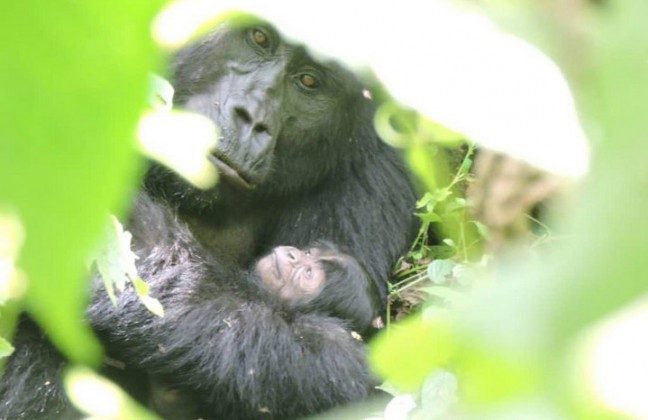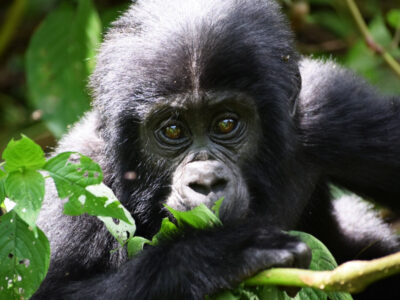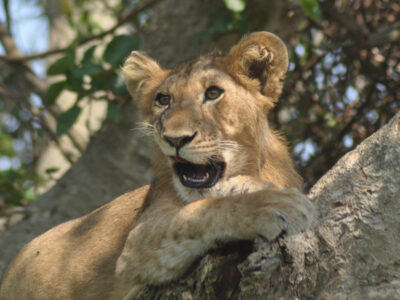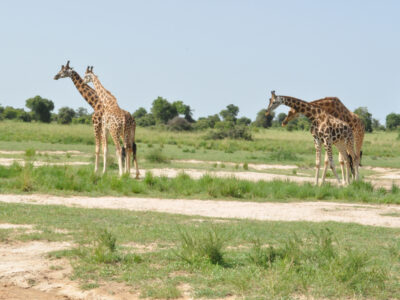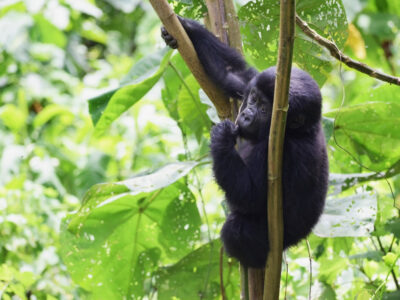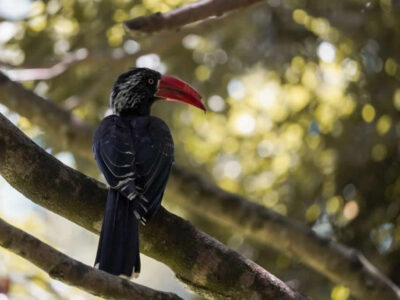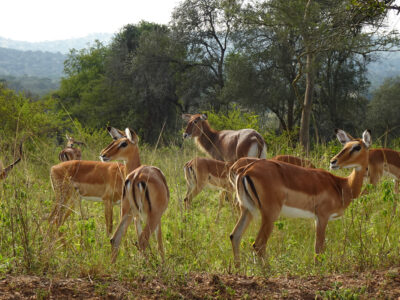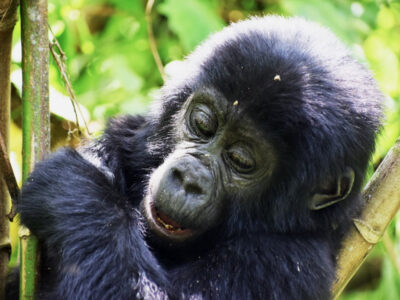There are several endangered mountain gorilla species that call the Kutu gorilla family in bwindi impenetrable forest national park a home. A phenomenon was observed following the birth of a newborn mountain gorilla on July 15 of this year, adding to the park’s population of critically endangered mountain gorillas.
The majority of the world’s mountain gorillas—nearly half—can be found in Bwindi Impenetrable National Park, which is home to the greatest population of these primates. The Kutu family may be found in the Rushaga sector of the park, one of the park’s four sectors that contain around 20 gorilla families in total.
The 18-year-old adult female of the Kutu group gave birth to a gorilla in Rushaga-Bwindi Impenetrable National Park, and the Uganda Wildlife Authority was thrilled to announce the newest addition. Due to an inherent disability in one of her fingers, Murema, whose name means “lame,” has now welcomed two healthy newborns.
The Uganda Wildlife Authority (UWA) reports that she gave birth to her second ‘bouncing’ baby gorilla on Friday, July 15, 2022, however, the mother has been quite protective of her new one since then. She gave birth to her first offspring, a gorilla named Dunia, five years earlier.
A few of the first photographs taken of the mother and child by the conservation field crew demonstrate that both are in excellent health and are content in their natural habitat, the forested areas of Bwindi Impenetrable National Park, which has added happiness and fresh life.
Under the capable guidance of Silverback Ndugu, the Kutu gorilla family has increased in size with the birth of this new baby. Ndugu, whose name basically refers to “brother” in English, is in fact very friendly toward visitors who participate in the gorilla habituation experience.
Who is the Kutu family?
The Kutu group is one of the habituated gorilla families that can be found in the Rushaga sector of Bwindi Impenetrable National Park’s southern region. Eight individual gorillas made up the Kutu gorilla family at the time of habituation after going astray from the Mucunguzi group. Kutu group is led and controlled by one dominant silverback named “Ndugu.” All visitors interested in a gorilla habituation experience must book a habituation permit, which costs $1500, to observe a new family member who has been welcomed into the group and participate in their daily activities. The group is currently not available for regular gorilla trekking but is reserved and available for a gorilla habituation experience.
Gorilla habituation is the process by which researchers and specialists teach mountain gorillas how to become accustomed to participants in habituation so that they do not react negatively to them. The habituation method enables visitors to spend four hours interacting with the gorillas and taking part in activities including calling, observing habits, and identifying specific gorillas’ test feces.
The habituation activity, which was introduced in 2014 primarily for visitors with limited time who would like to spend more hours with endangered mountain gorillas in the wild, has had an impact on the growth of tourism revenue as a result of the numerous tourists who enthusiastically travel to Uganda to participate in the experience.
Uganda is one of the top three countries in Africa for gorilla-trekking tours, and this has been made possible by the introduction of an experience that allows tourists to observe gorillas for four hours. This gives tourists more time with mountain gorillas in the wild than they would have with them on a regular gorilla trek, which lasts only an hour.
Gorilla population in Africa
The endangered mountain gorillas are currently found in three nations in East Africa: Uganda, Rwanda, and the Democratic Republic of the Congo. With about half of the world’s mountain gorilla population, Uganda has the highest percentage of them among the three countries, and Rwanda is next.
In contrast to Rwanda, which has 12 gorilla families that can only be found in Volcanoes National Park, Uganda has around 20 gorilla families in Bwindi Impenetrable National Park and one in Mgahinga National Park. In comparison to Uganda, where gorilla sites are spread out and require more time to reach them, gorilla trekking in Rwanda is less challenging because it takes less time to go to the park from kigali-their capital city
Although gorilla trekking in Uganda is exciting and less expensive than in other nations, gorilla permits varry by country; in Uganda, it costs 700 dollars for trekking and 1500 dollars for a habituation permit; in Rwanda, it costs 1500 dollars; and in the Congo, it costs $400 dollars.Rwanda and the Democratic Republic of the Congo cost 400. Without this document, you are unable to enter the habitat of the critically endangered mountain gorillas.
How to access a gorilla permit
A gorilla permit can be obtained via the Uganda Wildlife Authority (UWA) reservation office or by asking your tour company to make reservations on your behalf. Permits for Rwanda are bought from the Rwanda Development Board (RDB) and the Virunga National Park headquarters in the Republic of the Congo. However, in order to minimize inconveniences during the trekking, all reservations must be made a few months prior to the trip’s start.

